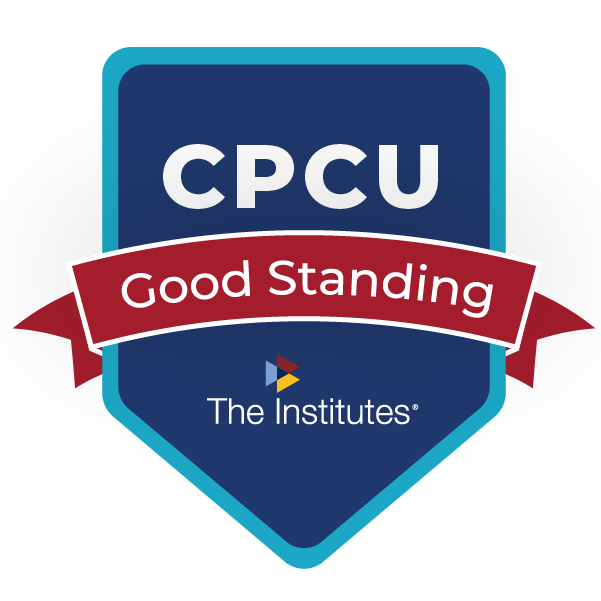Treasury Says “No” to Single Claimant QSF Request
January 20, 2012
Treasury Issues Final Regulations Under 104(a)(2)
Physical Injury Damages Exclusion
Internal Revenue Code Section 104(a)(2) is the foundation upon which structured settlements, which provide guaranteed future periodic payments on an income tax-free basis for personal, physical injury claimants, is built.
On January 20, 2012, Treasury issued its FINAL regulations under the code.
And while they didn’t actually use the words I’ve chosen for this newsletter’s headline above, their persistent refusal to act on the request reinforces the structured settlement industry’s long-standing consensus opinion on the topic:
Single Claimant Qualified Settlement Funds (QSFs) conflict
with the spirit of the original intent of the code.
What is a Qualified Settlement Fund?
In non-legal terms, IRC Section 468B is a section of the tax code that permits defendants to settle a claim when (typically) there are multiple defendants and/or claimants settling for an agreed sum but specific allocations are yet to be determined and/or defendant(s) need(s) to pay part of their obligation at some point in the future.
It addresses, among other things, timing of deductions.
When proper steps are followed (court order required, etc.), it permits the defendant to settle the case, pay the money owed (or give it time to arrange funds necessary to meet its obligation) and be done with the file. A 468B Trust, or Qualified Settlement Fund (QSF), “stands in” for the settling defendant(s) and permits closure and certainty for the defendant.
Once this step is completed, the competing interests for the settlement dollars agreed to can proceed unencumbered by any defense intervention.
A QSF can be an excellent settlement tool for certain classes of cases. Mass torts involving a large number of plaintiffs can be perfect candidates for QSFs. In these instances, allocations can be arranged, plaintiffs have time to explore their post-settlement financial options, attorneys can be paid, liens can be resolved, etc. all in the time needed to accomplish these ends.
An exceptionally small minority of structured settlement practitioners believe the Code applies to single claimant transactions and asked, on more than one occasion, the Internal Revenue Service for clarity on the important doctrines of economic performance and constructive receipt.
The IRS has repeatedly chosen to pass on the request as they did again here citing that it was beyond the scope of the regulations.
Where We Stand
Our firm does NOT support the use of structured settlements flowing from a single claimant QSF for a variety of reasons. Among them:
- Economic Benefit Most likely Triggered: While this may be debated by some in our industry, we don’t care to expose our clients to unnecessary risk;
- Limited Structured Settlement Options: The vast majority of life markets offering structured settlements steadfastly refuse to accept a structured settlement funded by a single claimant QSF. This seriously limits a plaintiff’s choice;
- We Don’t Push the Envelope with a Client’s Future: We prefer to stick with the tried and true. Properly crafted structured settlements, arranged in cooperation with all settling parties and their representatives, will normally achieve the best outcome;
- Time Value of Money: Everything else being equal, funding a structured settlement annuity earlier rather than later puts more money in the client’s pocket;
- It’s Unnecessary: Implementation of a QSF requires several court approval processes and usually involves trust management fees and other costs which can erode the plaintiff’s settlement. All can be accomplished more easily and more cost effectively without the QSF.
Also
Lest readers think we missed other important matters address in the regulations, there are two other areas upon which the IRS opined:
- Treasury DID NOT ADOPT commentators’ requests to, among other things, define certain personal injuries as “physical” which would unequivocally qualify them for income tax-free treatment. On this particular point, we are disappointed because it could have possibly clarified the tax-treatment of damages paid to exonerated prisoners among other classes of claimants; and,
- Treasury DID NOT ADOPT one commentator’s request that elimination of the “tort like” test that has long been required in order for damages to flow tax-free to the plaintiff, would create confusion. However, in this instance, not adopting was viewed as a plus since it broadens the scope of cases which may be eligible for special tax treatment. The impact of this decision and its impact on the structured settlements remains to be seen.
If you have any questions on any of this or any other topic involving structured settlements, please don’t hesitate to call. This was a long newsletter but we felt it was important enough to share with those who trust us to keep them abreast of important developments that impact their practices.
Thank you for the continued opportunity to be of service and best wishes for continued Struccess!
Posted: January 25, 2012 | by dan | Category: Articles, Blog, Newsletter, Structured Settlements

















